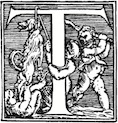
he first reviews on The Fabric of the Human Body have been published. We hope to add others soon. Please find below excerpts from the reviews together with the links.
The Fabrica Remade: A New Translation of the De Humani Corporis Fabrica Libri Septem (1543, 1555) of Andreas Vesalius ^
'For a modern reader, familiar with the Vesalian images but with little familiarity with the text, this translation will be a revelation. Here is not just the minute descriptive particularity with which Vesalius reveals the body’s structures, but his digressions, his words of advice or warning, his anecdotes, and his caustic asides on the work of both his predecessors and his contemporaries.'
Johnatan Sawday
The University of Chicago Press on behalf of The History of Science Society
Isis, Volume 106, Issue 3 , Pages 677-683, September 2015
© 2015 The University of Chicago Press
Book Review from the Journal of Hand Surgery
'... Opening this book is the tactile and visual equivalent of the auditory joy of Glenn Gould playing the Well-Tempered Clavier, or Jimmy Page picking up the Number 1 Les Paul in your own living room, miraculously transformed to Carnegie Hall...
The books are massive and unwieldy, but that is part of the fun. A book like this compels the reader to stop, to sit down, to look, and to think. All of the elements have come together, once again in Basel, for a loving reissue of an all-time publishing and scientific landmark. Recommended without reservation to surgeons and physicians, anatomists, bibliophiles, and anyone who loves books for their own sake.'
David E. Tate, MD
Louisville Arm and Hand
Louisville, KY
Journal of Hand Surgery
Volume 39, Issue 2 , Pages 397-398 , February 2014
© 2014 ASSH, Published by Elsevier, Inc.
Book Review from Brain a Journal of neuroloy
'Daniel Garrison is critical of Vesalius’s Latin and his verbosity making for difficulties both in reading and in translating; but the style is retained since ‘the rhetoric and language of the Fabrica are essential, not incidental elements in the book’; and Garrison has gone for coherence rather than ‘masking the gassy prolixity and strong flavor of his Latin’ on the basis that Vesalius, who may have dictated to an amanuensis, meant what he said even if some of it is plainly wrong. Nor does the anatomical expert, Malcolm Hast, put straight Vesalius’s errors. Throughout, Vesalius adhered to three doctrines: ‘nature is continuous with justice’; ‘nature is the primary form of beauty’; and ‘nature does nothing in vain’. In having available a comparison of two texts and also accommodating Vesalius’s further emendations to the 1555 edition, the reader could get badly lost; but a page explaining how to use this book, decode the typefaces and use of colour printing, so as thereby to sort one source from another, is provided—the anatomy of an anatomy.'
Alastair Compston
Cambridge, UK
Brain
Vol. 137, Issue 11, Pages 3087-3098 , October 2014
© 2014 Oxford University Press
